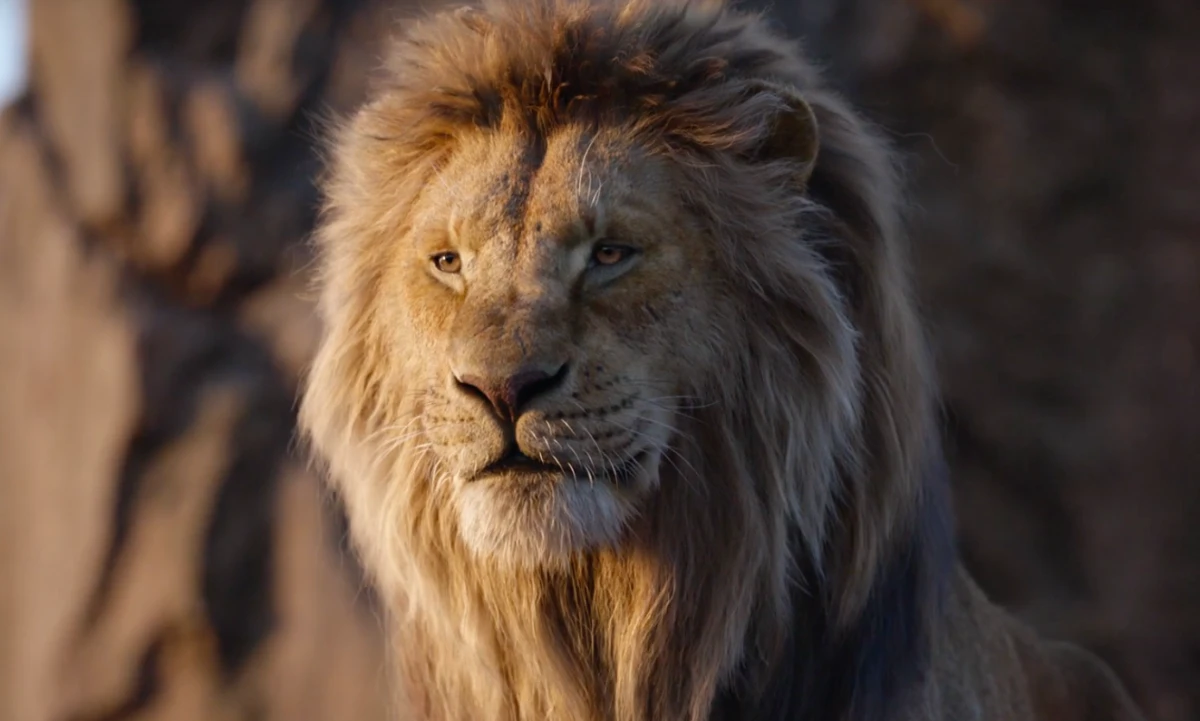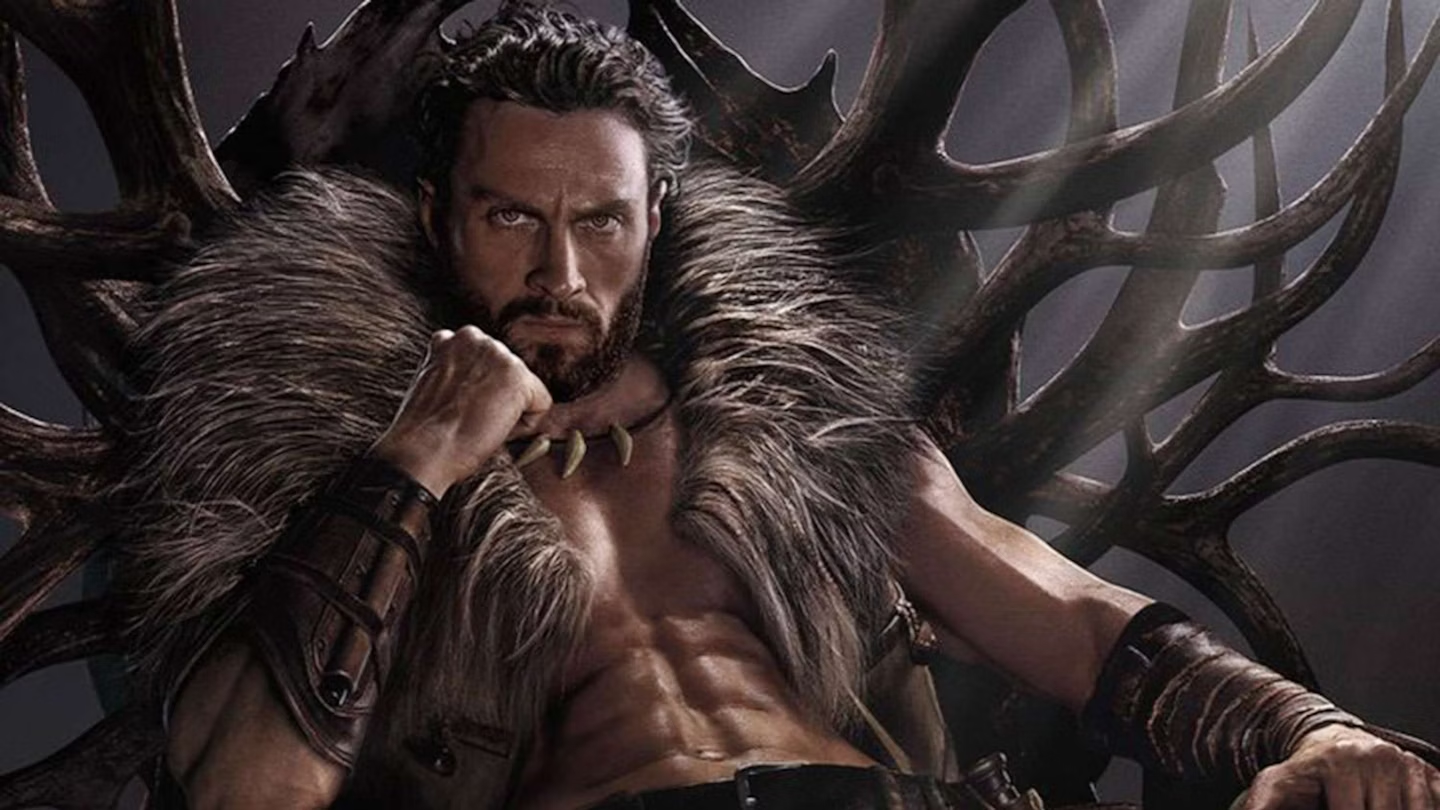Hello?
Hi this is Jim Batt here.
Oh wow I love your accent, that’s awesome.
It comes natural.
That’s awesome.
Im duly supposed to inform you that this call is being recorded simply for my note-taking purposes.
Noworries, sorry I was a bit late calling.
Its all good you’re obviously very busy.
Yeah the last interview went a bit into technical stats so we ran a bit overtime
That’s totally fine. So we’re here talking with jim batt, about his creative collaboration for Neil Gaiman’s The Isle of St. Oran. So let me ask you, what made you as a director decide to take on this particular project?
We first heard the poem when Neil Gaiman was giving a reading of it at one of his events, I think even before it was published. He had given a reading of it and at the time I was looking for a new project, I had just finished a few other animated shorts, and so I got the poem stuck in my head, the strange imagery of it and the melancholy atmosphere. And when I was looking for a new project, I had some friends in common with Neil which was convenient, so I emailed him and was like hey, how would you feel about me adapting this poem. And he (Neil) is very generous with his creations, I think he’s more interested to see the versions other people will make of his stories. So he was onboard, he’d seen some of my previous work which I think really helped, so he could get a kind of sense of the skills I’d bring to it, and so yeah, that started the project. It was quite a few years ago now, and then off the back of that we planned to raise the funds for the project off a kickstarter, so we did that, and because Neil has such a supportive community, we were able to get together the funds to hire a small team, and that was that!
Was it you who made the decision to do the paper cutouts meticulously hand animated frame by frame?
(laughs) Yes it was. The project I had just finished at the time had been paper cutouts as well, so I had been exploring that kind of format before, and was interested in taking those techniques I had learned from making the previous film and developing them a bit further. One of the things I really like about it is its an opportunity to collaborate with other illustrators, so you can work with other people who aren’t necessarily familiar with animation, so one of the first people I brought onto the team was Ellen Barkin, she’s a Swedish artist who did all the watercolor drawings for the film, and because we do paper cutouts what it means is that she could look at our storyboard, draw and paint the scene, and then we would take it and break it all down into layers in photoshop, build the puppets from that, and then print it all out and hand-cut it all out with scalpel blades and then we actually animate on layers of glass, we use a fairly old-school technique called multi-plane animation, which is basically we’ve got a giant 9ft high by like 5ft wide rig that’s got like 5 or 6 layers of glass on it and we put all of the paper on it, we rebuild the scene with layers and the cameras overhead so from the cameras point of view, it looks like a seamless 3D landscape. But it means you can get in there and light each layer separately. Josh Mahan who’s the lead animator, could then get in there and animate the characters separate from the background and things like that.
That’s super cool. It reminds me a little bit of the ancient Chinese art of shadow storytelling, or shadow puppetry, if you know what I mean.
Yeah! For sure.
Was it you who made the decision to make it into a cartoon? Why not a Claymation or even a live-action?
Yeah! I mean, I direct live-action as well, so it was a very conscious choice to go with animation on this. I think, I find Claymation is harder to capture some of these more somber moments and I think that we knew that this story would have a lot of stillness and a lot of atmosphere, so it kind of made sense to go with something that has like the gentleness of watercolor and kind of ephemeral feelings with that, it definitely felt like the right approach, whereas Claymation is much more tactile and kind of more immediate. I think the other things that’s real important to me in terms of choosing stop-motion over Claymation is, is that it has this very real feel to it, you can see the way the light bounces around, its not like manufactured, all of it is grit and texture, from a digital composite or something. So that for me was a good way to bring that kind of feeling to the film. And live-action would be interesting, but I think it would be a challenge to capture a lot of this atmosphere, especially because of the way the story is told, like the landscape and the atmosphere and that sort of thing kind of change a lot throughout the course of the story, the scope would’ve been a lot harder, I think we have a lot of fantastical sequences in there that were challenging to do on a small budget, much less live action.
And will you be showing the film in various places, such as film festivals? How are we the common public gonna be able to see it?
Yeah, for sure! We’re actually at the tail end of our festival run at the moment. We got a little interrupted by the pandemic, unfortunately. But we’ve been screening here and there, had some really good screenings, it’s been awhile since we’ve had any in-person ones so I’m looking forward to actually being able to watch it with an audience again, like at Comic-con.
And that actually leads into my next question – it says that it’s your first Comic-con ever, please – elaborate!
So I haven’t been to Comic-con before! I’ve heard a lot about it, obviously.
I find that hard to believe, it seems like you’d be right up Comic-con’s alley!
Well, I look forward to checking it out this time! I’m gonna ease into it a little bit, I’m only going for the Saturday and the Sunday. And I’m looking forward to seeing what it’s all about!
Your Twitter handle happens to be “Battsignal”, are you into Batman?
Yes yes, when I was a kid I think Batman was my favorite comic book. So that was an easy Twitter handle to come up with.
That’s super cool. Do you have a preference as far as comics go? The standard DC vs. Marvel is a bit overdone at this point, and though of course for this there’s a bit of preference because DC Vertigo is Neil Gaiman’s thing, it’s where Sandman happens to live, but other comic book companies, and even graphic novels like Umbrella Academy and such, have gotten very popular in recent times, people are getting more into alternatives, what have you got?
Yeah, I think like you said the DC vs. Marvel thing is much less an issue these days, people can take what they want from each thing. When I was a kid I used to like DC comics a lot more, I wasn’t really into Marvel comics when I was younger, but then I kinda got back into comics when I was at University, all the DC Vertigo stuff, I read a lot of Vertigo comics at that point. I would say what’s interesting now is that on the film front, the Marvel films are definitely the ones I find more interesting, the DC films don’t feel quite like they’re nailing it as well. But I would say now I read a lot of independent stuff, so I would say probably Image is actually where, if you look at my collection of comics on the shelf, a lot of it is gonna be Image stuff.
Did you see the, I believe it was an Image character, the Bloodshot movie?
No, I haven’t seen that. Was it good?
I actually liked it. It wasn’t widely popularized despite starring Vin Diesel, but I thought it was good!
Okay good, I’ll have to check it out.
Have you actually been to the Isle in the story, the Isle of Iona?
No actually I haven’t, but by coincidence, my parents have. So they were like, oh we went there this one time, and I was like okay, that’s a huge coincidence. So they had some photos I could use for reference, which was good. And I got to show them the film and ask them, we got it right? So yeah that was an interesting little coincidence, but no, I haven’t but I would very much like to. When we did the Kickstarter, there were some people who reached out who were actually from Isle of Iona, saying they were very excited for us to tell the story and were looking forward to seeing it. So that was pretty special. And I would like to go there at some point, we briefly spoke with someone who was like, Oh there’s a festival and maybe we could do a screening, and I was like damn, that would be cool.
Wow, I am totally impressed. So, what are you working on next?
Covid has kind of screwed filming for awhile, so mostly focusing on scriptwriting for the moment. The next project will be longer, is the main thing. Depending on which of these gets off the ground, I’m interested in doing – stop-motion takes a long time to make anything, so I’m interested in doing something episodic there because the feasibility of doing a stop-motion film is very slim, and you need a lot of resources to not let that take up the rest of your life. But I am interested in exploring the idea of something that releases like a series of very short episodes, that like all add up to a bigger theme. That’d be an interesting format to explore so I’m working on some scripts there, and then some kind of Indy-Sci-fi feature scripts as well.
Is it possible to get a tiny tiny teaser for the sci-fi script you just mentioned?
Well it’s early days, but I can say it’s blue-collar sci-fi.
That doesn’t happen terribly often!
I wanted to do something in a kind of Cowboy Bebop vein. I think the title sequence to Cowboy Bebop is one of the most amazing pieces of animation ever done, such a good intro to like encapsulate exactly what they’re going for, and when I saw the live-action version of the intro and they just didn’t quite nail it, I was like, I think I’ll just leave this there for now.
Rather than courting potential huge disappointment, yeah. How about other anime you happen to enjoy?
I rewatched Princess Mononoke recently. It’s just like such a well-told story that is as timely as ever I think. It really captures that feeling of like, not needing all your characters to have a happy resolution at the end, some of the character arcs it leaves it pretty up in the air, like yeah this is some stuff and we’re gonna have to work it out. And I think that’s really important storytelling. You want your storytelling to be about something – it’s nice to have an element of escapism, what I like about genre in general is you’re able to inhabit other places but at the same time it doesn’t have to be an escape, it can be something that brings to mind current issues or themes, things that make you think of everyday life.
Do you watch foreign films, Korean, Japanese, that sort of thing?
Yeah, for sure. My favorite foreign thing recently has been Dark, all three seasons of Dark (on Netflix). With it’s like impeccable filmmaking, incredibly well-written scripts, I hesitate to recommend it because each season’s ending looked like it may have gone off the rails a bit, but they somehow manage to nail it, the plane lands on the runway and you’re like wow, they actually pulled it off. It somehow all clearly made sense, from step one, if you just hang in there. So it doesn’t pull a Lost, where it sort of veers off and no one knows what’s going on anymore! I was nervous in the beginning with Dark, like do they know what they’re doing, and then you get to the end and there’s things they clearly set up in episode one and you’re like, okay, this is master craftsmen at work here.
That’s fantastic and I will definitely take your recommendation. So was there a panel or anyone in particular you were looking forward to seeing at Comic-con?
I haven’t really had the chance to dig into what panels there are, I’m more just going to going and experiencing it. I think having too much of a plan sounds like not the best way to do that, so I’m just gonna catch up with some friends and then follow my nose and see where it takes me!
Sounds great! Well that’s the full slate of questions I had, thanks so much for taking time to do an interview with me, I hope your panel at Comic-con goes over very well and you have a grand time at the Con itself!
Cheers!

Movie
‘Mufasa: The Lion King’ Will Leave You Breathless

“Mufasa: The Lion King” is a visually stunning addition to the beloved Lion King franchise, offering a fresh and emotionally resonant take on the origins of one of Disney’s most iconic characters. The film beautifully explores Mufasa’s journey, balancing heartfelt moments with touches of comedy that lighten the mood and make the story accessible to audiences of all ages. The animation is breathtaking, capturing the vibrant landscapes and lush environments of the Pride Lands, adding depth to Mufasa’s character and his relationships.
The storytelling is compelling, effectively pulling at the heartstrings while providing insights into Mufasa’s character before he becomes the legendary king. However, the setup for Scar’s betrayal feels somewhat underdeveloped, lacking the deeper motivation that could have enriched their complex brotherly relationship. This missed opportunity leaves a slight gap in understanding Scar’s actions, which could have elevated the dramatic stakes.
The musical score is impressive, featuring memorable songs that enhance the emotional impact of pivotal scenes. While there are several standout tracks, one song, in particular, resonates deeply and is sure to linger in viewers’ minds long after the credits roll. Overall, “Mufasa: The Lion King” is an amazing film and a worthy addition to the Lion King lore that manages to deliver both laughter and tears, offering a rich tapestry of storytelling that fans will appreciate.
Movie
Is ‘Kraven the Hunter’ a Total Letdown?

“Kraven the Hunter,” directed by J.C. Chandor, aims to introduce a beloved Spider-Man villain to the big screen, but unfortunately, it falls short of expectations. The film suffers from noticeable issues, notably an overuse of ADR (Automated Dialogue Replacement), which detracts from the authenticity of the characters’ interactions and contributes to an uneven audio experience. This technical flaw is compounded by rough storytelling that feels disjointed and lacking in coherence, leaving viewers struggling to connect with the narrative.
Aaron Taylor-Johnson delivers a commendable performance as Kraven, showcasing the character’s gritty nature and complex motivations. His portrayal has potential, and it’s evident that he could elevate the character far beyond what is presented with a stronger script and direction. However, the absence of Spider-Man, a central figure in Kraven’s lore, leaves a void that the film struggles to fill. Without this critical connection, the plot meanders and fails to create the tension or stakes that fans of the superhero genre crave.
Additionally, including Rhino as a villain feels like a missed opportunity; he is presented more as a gag character with limited screen time, undermining any sense of threat or depth. For the average moviegoer, “Kraven the Hunter” might entertain but ultimately feels like a mediocre viewing experience. Comic book fans, however, may find disappointment in this lackluster attempt to create a solo character film. Instead of an exhilarating dive into Kraven’s world, the film presents a watered-down version, leaving audiences wishing for a more cohesive vision that honors its comic book roots.
Movie
A Brief Review and History of A Year Without a Santa Claus

A Year Without a Santa Claus, the 1974 stop-motion holiday classic produced by Rankin/Bass, is a heartwarming and whimsical tale that has cemented its place in holiday traditions. Based on Phyllis McGinley’s 1956 book, the story revolves around a disheartened Santa Claus who, feeling unappreciated, decides to take a year off from his Christmas duties. It’s up to Mrs. Claus and a pair of well-meaning elves, Jingle and Jangle, to reignite the Christmas spirit and show Santa the world’s unwavering belief in him.
The movie is beloved for its unforgettable characters, especially the bickering Miser Brothers, Snow Miser and Heat Miser. Their catchy, vaudeville-style musical numbers, “Snow Miser Song” and “Heat Miser Song”, are so iconic they’ve become cultural touchstones, often parodied and celebrated decades later.
Directed by Arthur Rankin Jr. and Jules Bass, the film continues the duo’s tradition of stop-motion magic, blending heartfelt storytelling with quirky humor. The voice cast, featuring Mickey Rooney as Santa and Shirley Booth as Mrs. Claus, delivers standout performances. Booth’s warm narration was her final acting role before retirement, adding a layer of poignancy to the film.
Initially released on December 10, 1974, on ABC, the special didn’t immediately achieve the legendary status of Rudolph the Red-Nosed Reindeer. However, it gained a dedicated following through annual holiday airings, nostalgic appeal, and its distinct charm.
The film’s themes of hope, unity, and rekindling joy remain timeless, making it a perennial favorite for audiences of all ages. Its blend of humor, catchy songs, and a touching message about believing in magic and goodwill ensures its enduring legacy during the holiday season.
For fans of holiday classics, A Year Without a Santa Claus is a must-watch that never fails to warm hearts and spread cheer.

